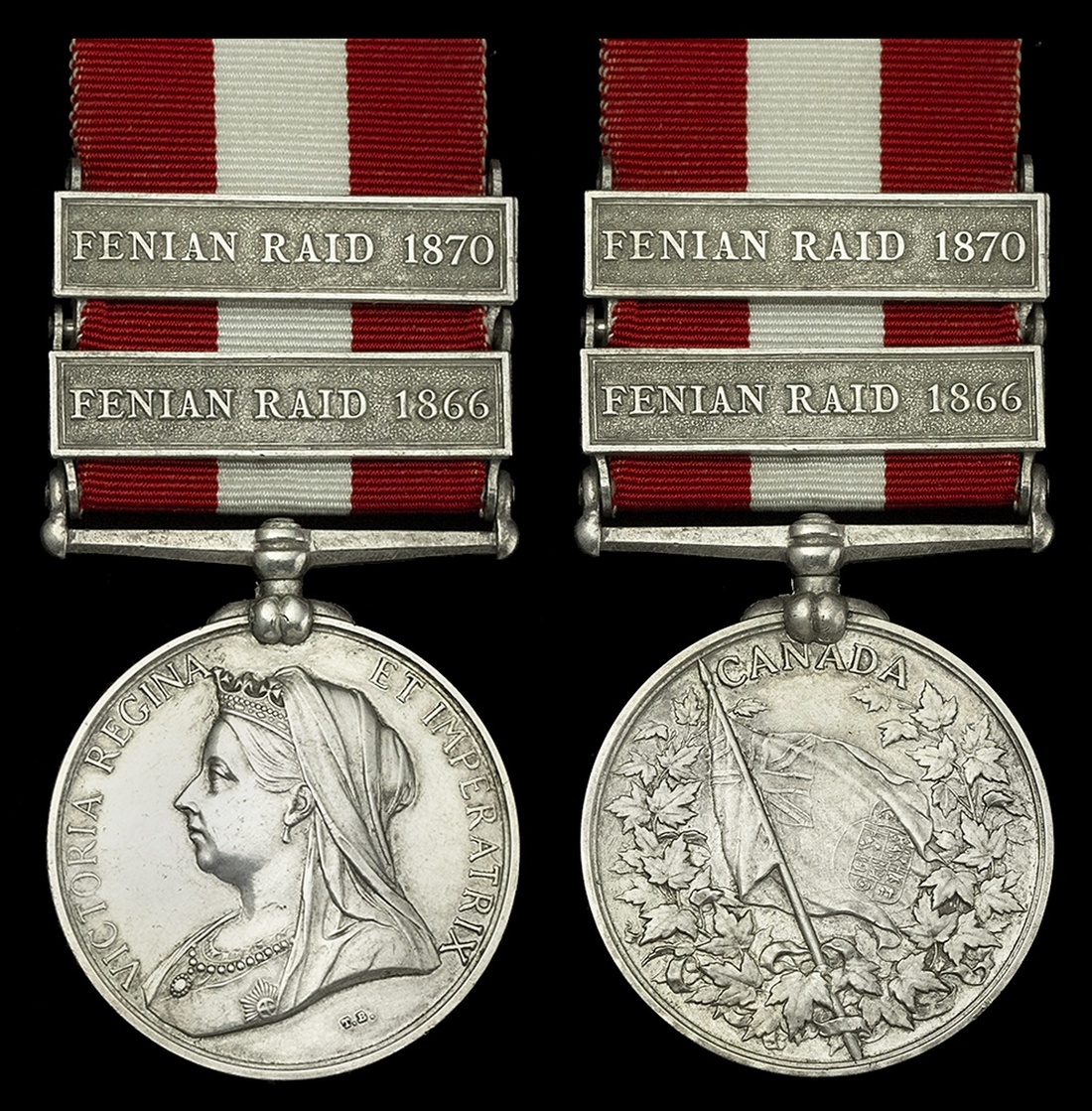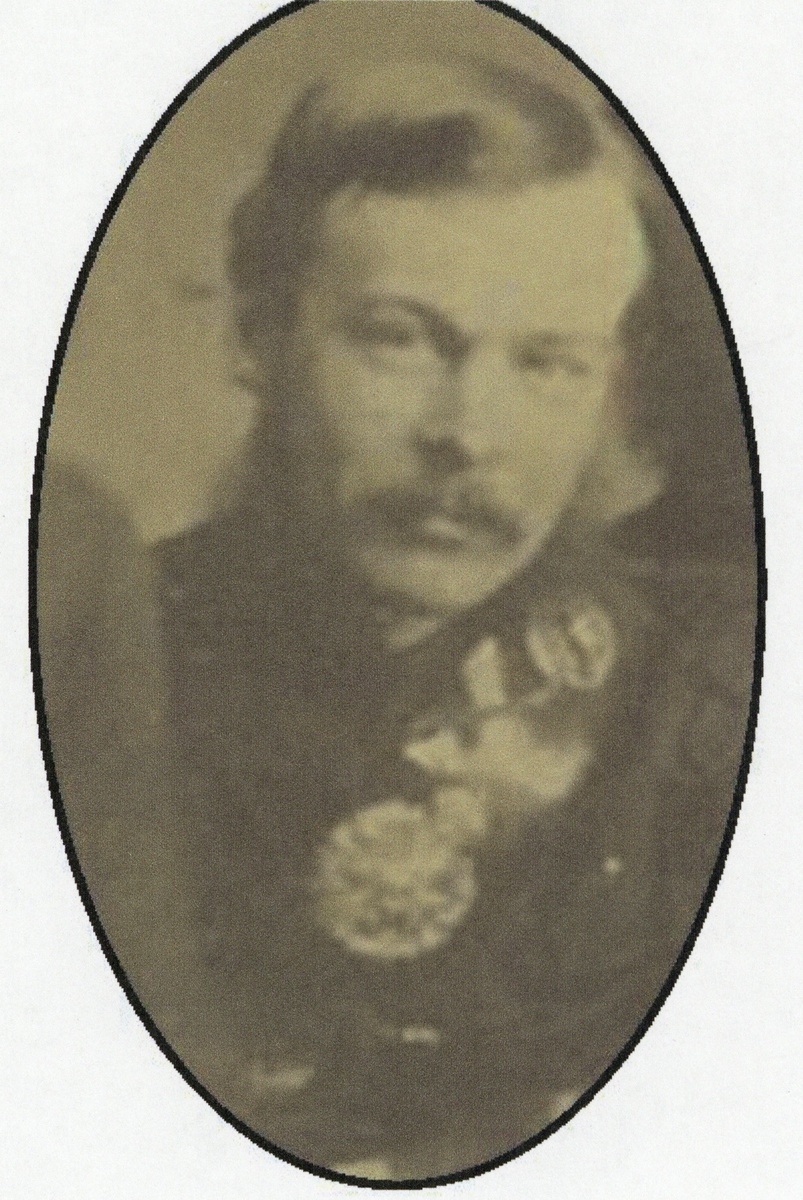Auction: 18003 - Orders, Decorations and Medals
Lot: 89
The Canada General Service Medal awarded to Lieutenant-Colonel Sir Anthony Cope, Bt.
Canada General Service 1866-70, 2 clasps, Fenian Raid 1866, Fenian Raid 1870 (Lt. Anthony Cope, 1st Batt. (P.C.O.)), an official but later impressed issue, good very fine
Anthony Cope does not appear on the published roll, or not at least under the Rifle Brigade, but his part in the Fenian operations of 1866 and 1870 is confirmed in the following - charming - obituary notice published in The Rifle Brigade Chronicle of 1932:
'Tony Cope, who died at the ripe old age of 90 years, must have been nearly the oldest living Rifleman, and very few are left who actually served with him. Born in 1842, he joined the Regiment as Ensign in October 1860, was promoted to Lieutenant in 1865, Captain 1872, Major 1881 and Lieutenant-Colonel 1890, retiring in May of that year. From May 1875 to November 1881 he held the appointment of Adjutant of Volunteers on the Isle of Wight.
He served with the Regiment in Canada against the Fenians and received the Medal with clasps 1866 and 1870; he also served with the 2nd Battalion in Ashantee in 1874 and received the Medal and clasp 'Coomassie'. During that campaign he distinguished himself when in command of a post on the line of communication which was heavily attacked.
When the writer joined the 2nd Battalion from India at Cork in 1882, Cope was serving with them, and he remained with the Battalion whilst it was at the Curragh, Aldershot and Woolwich, being transferred to the 3rd Battalion about 1887. He was a very keen smart soldier and devoted to the Regiment. One of the kindest of men, he was most cheery and a delightful companion.
It is sad to think that his life's ambition to command a battalion was never fulfilled, a disappointment which he felt very keenly. The writer cannot recollect at this distance of time whether he was actually retired for age, or whether he retired voluntarily on seeing that owing to age he had no chance of obtaining command of a battalion. At all events, it was a real grief to him, but to the last he took the greatest interest in all that concerned the Regiment.
When he retired he lived for many years at his beautiful place at Bramshill; eventually however he made the place over to his son and resided, for a large part of his time, in London. He died at Bramshill on 7 November 1932.'
Cope succeeded his father as 13th Baronet in 1892.
Cataloguer's note:
Bramshill House, near Hartley Wintney in Hampshire, is one of the largest and most important Jacobean prodigy house mansions in England and was built in the early 17th century by Baron Edward la Zouche of Harringworth; among the 14 ghosts reputed to haunt the house is that of a bride who accidentally locked herself in a chest on her wedding night and was not found until 50 years later.
Sir John Cope purchased the property in 1699, and his descendants occupied the premises until 1935. The Cope family shortened the wings on the south side in 1703, converted most of the chapel to a drawing room and introduced a mezzanine on the west side during the 18th century. They were responsible for much of the interior, with significant renovation work done in the 19th century and in 1920. After his victory over Napoleon, the Duke of Wellington was offered his choice of house by Parliament; he visited Bramshill but in 1817 chose Stratfield Saye instead. For further details, see:
https://en.wikipedia.org/wiki/Bramshill_House
N.B.
The recipient's Ashantee Medal 1873-74, clasp, Coomassie, was sold by Dix Noonan Webb on 13 December 2001 (Lot 292).
Subject to 20% VAT on Buyer’s Premium. For more information please view Terms and Conditions for Buyers.
Sold for
£750







